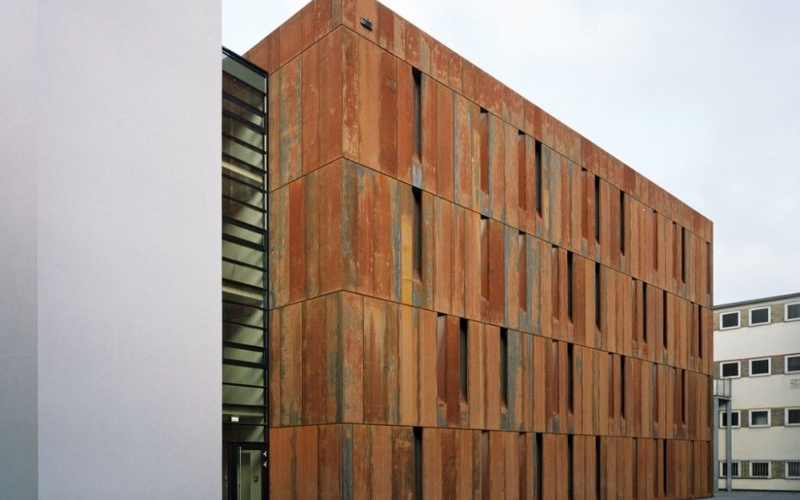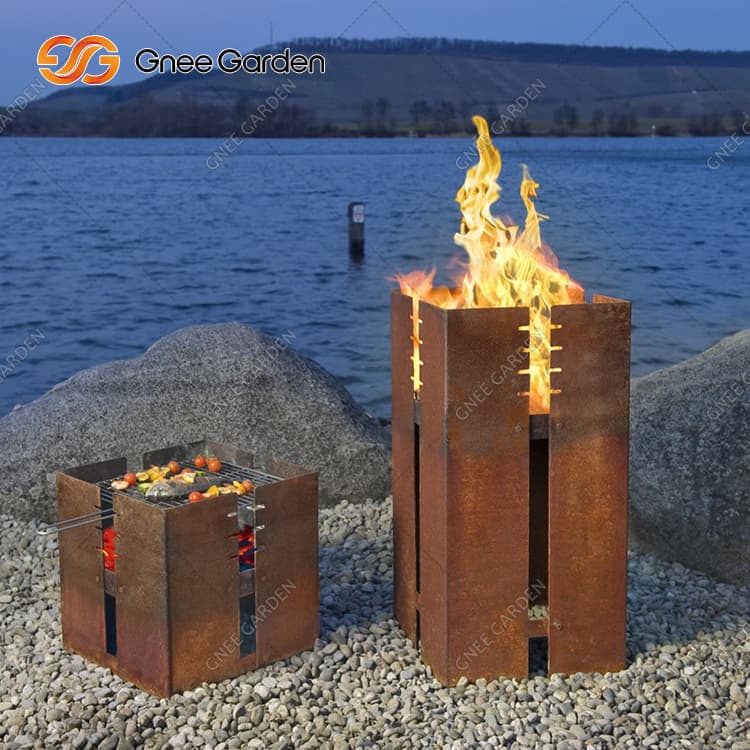Preparing the Corten Steel for Welding
Before embarking upon the task of welding Corten steel, one must pay heed to the imperative of adequately preparing the surface to ensure a weld that is both robust and enduring. The preparation of Corten steel for welding entails two pivotal steps: the cleansing of the surface and the assurance of proper fit-up and alignment.
Cleansing the surface of the steel
In order to attain a welding surface that is pristine and untainted, it is of utmost importance to expunge any traces of dirt, rust, or mill scale that may be present upon the Corten steel. This can be accomplished by employing a wire brush or sandpaper to diligently scour the surface. By eradicating these contaminants, the welding process can be executed with greater efficacy, thereby yielding a weld of superior quality.
Removing any dirt, rust, or mill scale
Prior to engaging in the welding endeavor, it is incumbent upon one to efface any vestiges of dirt, rust, or mill scale from the surface of the Corten steel. These impurities possess the potential to impede the welding process and undermine the integrity of the weld joint. By employing a wire brush or sandpaper, one must meticulously scrub the surface to eliminate these contaminants and establish a welding surface that is unblemished.
Using a wire brush or sandpaper for cleansing
When undertaking the task of cleansing the surface of Corten steel, one may avail oneself of a wire brush or sandpaper to efficaciously eliminate dirt, rust, or mill scale. These implements facilitate thorough cleansing and contribute to the creation of a smooth and untarnished welding surface, thereby fostering weld quality that is optimal.

Ensuring proper fit-up and alignment
The attainment of a weld joint that is sturdy and structurally sound hinges upon the assurance of proper fit-up and alignment. Before commencing the welding process, it is essential to scrutinize the joint gaps and angles to ascertain that they conform to the prescribed specifications. Furthermore, the utilization of clamps or magnets can prove instrumental in aligning the components of Corten steel, thereby guaranteeing their appropriate positioning for welding.
Checking the joint gaps and angles
Prior to embarking upon the welding endeavor, it is of paramount importance to meticulously inspect the joint gaps and angles so as to verify their adherence to the stipulated requirements. This step serves to ensure the attainment of fusion and penetration that is proper during the welding process. By assiduously scrutinizing and measuring the joint gaps and angles, any necessary adjustments can be made prior to welding.
Using clamps or magnets for alignment
In order to achieve proper fit-up and alignment of the components of Corten steel, one may avail oneself of clamps or magnets. These implements serve to secure the components in place, thereby ensuring their alignment for welding. By affixing the components with clamps or magnets, the welding process can be executed with precision, resulting in a weld joint that is robust and accurate.
Choosing the Proper Method of Welding for Corten Steel
When it comes to welding Corten steel, selecting the appropriate technique is of utmost importance in order to achieve a robust and long-lasting weld. There exist several methods of welding, each possessing its own advantages and limitations. In this article, we shall delve into three commonly employed techniques for welding Corten steel: Gas Metal Arc Welding (GMAW/MIG), Shielded Metal Arc Welding (SMAW/Stick), and Flux-Cored Arc Welding (FCAW).
Gas Metal Arc Welding (GMAW/MIG)
Gas Metal Arc Welding, also known as MIG welding, is a widely employed technique for welding Corten steel. It entails the utilization of a continuous solid wire electrode and a shielding gas to safeguard the weld from contamination by the atmosphere. The process necessitates the use of a MIG welding machine and the appropriate consumables. One of the principal advantages of GMAW is its rapid welding speed, rendering it suitable for projects that require efficiency. However, it is important to note that GMAW may not be ideal for thicker sections of Corten steel owing to its lower penetration capabilities.

Shielded Metal Arc Welding (SMAW/Stick)
Shielded Metal Arc Welding, commonly referred to as stick welding, is another prevalent technique for welding Corten steel. This method employs a flux-coated electrode that melts to form the weld. SMAW necessitates a welding machine capable of generating high currents and the use of appropriate electrodes. One of the key advantages of SMAW is its versatility, as it can be employed in various positions and environments. However, it is a slower process in comparison to GMAW and may not be suitable for thin sheets of Corten steel due to the risk of distortion.
Flux-Cored Arc Welding (FCAW)
Flux-Cored Arc Welding is a technique that amalgamates elements from both GMAW and SMAW. It involves the utilization of a tubular electrode filled with flux, which provides a shielding gas and additional alloying elements. FCAW is often favored for outdoor welding applications as it offers superior protection against atmospheric conditions. Moreover, it is well-suited for thicker sections of Corten steel owing to its heightened penetration capabilities. However, FCAW may produce more spatter in comparison to other methods, necessitating additional cleaning and post-welding treatments.
When selecting the appropriate welding technique for Corten steel, it is crucial to take into consideration factors such as the thickness of the material, the desired welding speed, and the specific requirements of the project. Seeking counsel from experienced welders or professionals in the field can provide valuable insights and guidance, ensuring a successful weld and optimal performance of Corten steel structures.
Frequently Asked Questions
1. How do I prepare Corten steel for welding?
Before welding Corten steel, it is important to cleanse the surface by removing dirt, rust, or mill scale. This can be done using a wire brush or sandpaper to ensure a clean welding surface.
2. Why is it important to remove dirt, rust, or mill scale before welding?
Removing dirt, rust, or mill scale is crucial because these impurities can impede the welding process and compromise the integrity of the weld joint. A clean surface ensures optimal weld quality.
3. What are the recommended welding techniques for Corten steel?
Three commonly employed welding techniques for Corten steel are Gas Metal Arc Welding (GMAW/MIG), Shielded Metal Arc Welding (SMAW/Stick), and Flux-Cored Arc Welding (FCAW). Each technique has its own advantages and limitations.
4. How do I choose the appropriate welding technique for Corten steel?
When selecting a welding technique for Corten steel, factors such as material thickness, desired welding speed, and project requirements should be considered. Seeking advice from experienced welders or professionals can help determine the best technique for your specific project.
5. What are some important welding practices for Corten steel?
Important welding practices for Corten steel include preheating the steel, using the correct welding consumables, and employing proper welding techniques and settings. These practices contribute to successful and durable welding results.
6. How should I handle post-welding treatment and maintenance for Corten steel?
After welding Corten steel, it is important to properly clean the welds using techniques such as wire brushing, grinding, or chemical cleaning agents. Applying protective coatings or sealants can enhance corrosion resistance. Regular maintenance, including inspections and reapplication of coatings, is also crucial for monitoring and addressing any signs of corrosion.
7. What safety precautions should I take when welding Corten steel?
When welding Corten steel, it is important to wear appropriate personal protective equipment (PPE), including flame-resistant garments, welding goggles or helmet, gloves, and respiratory protection. Proper ventilation in the welding area is also essential to minimize exposure to welding fumes.






